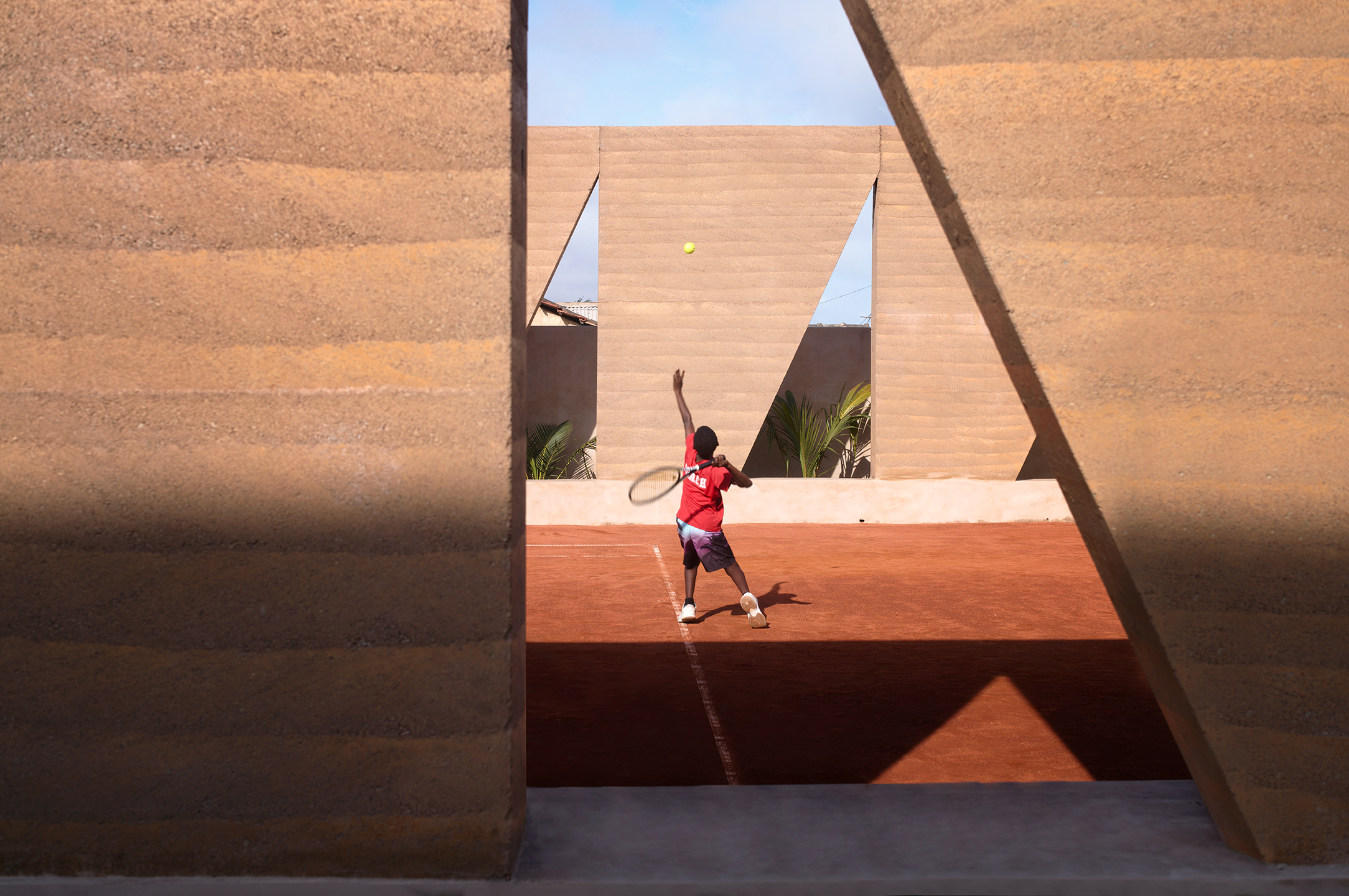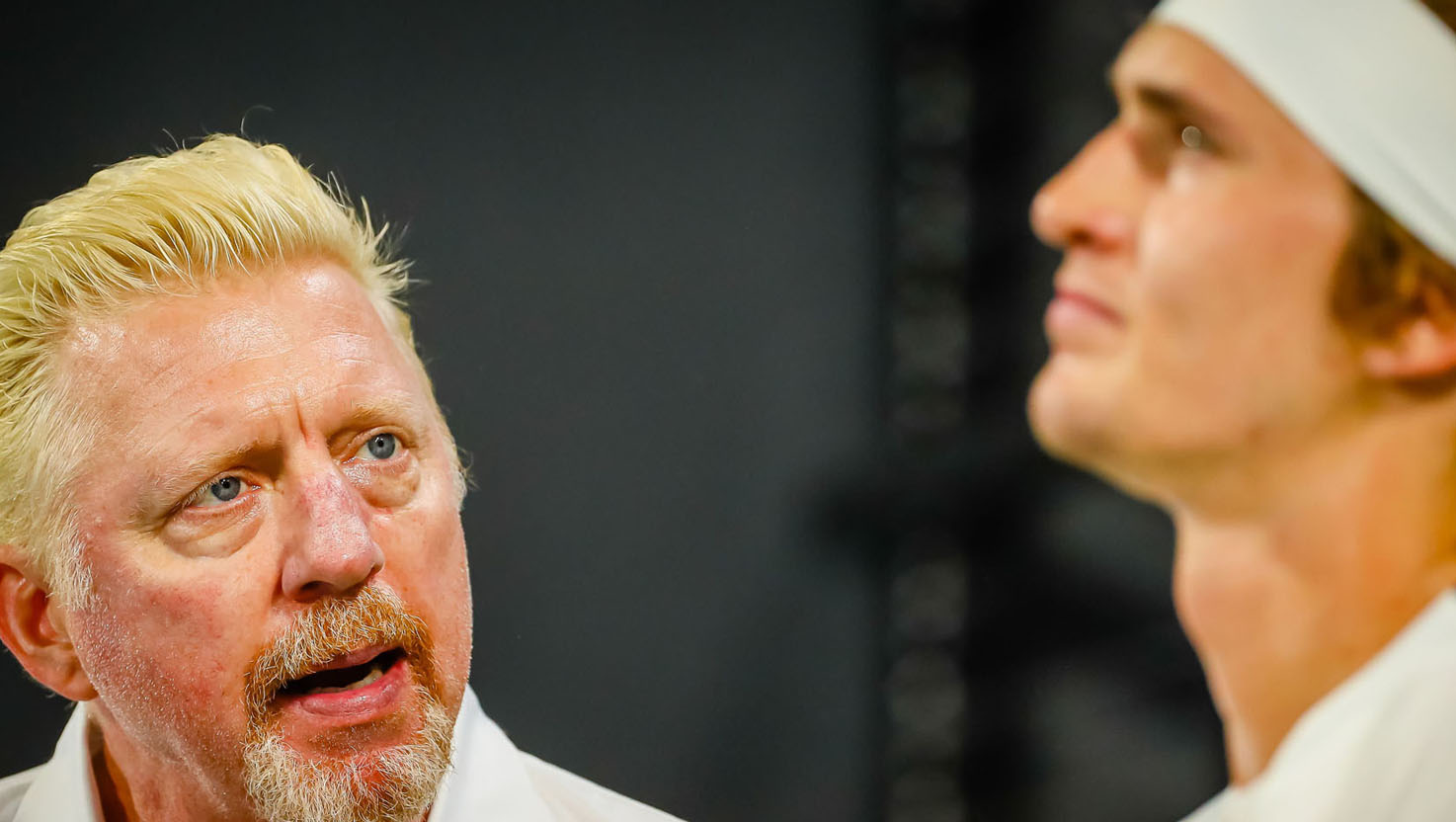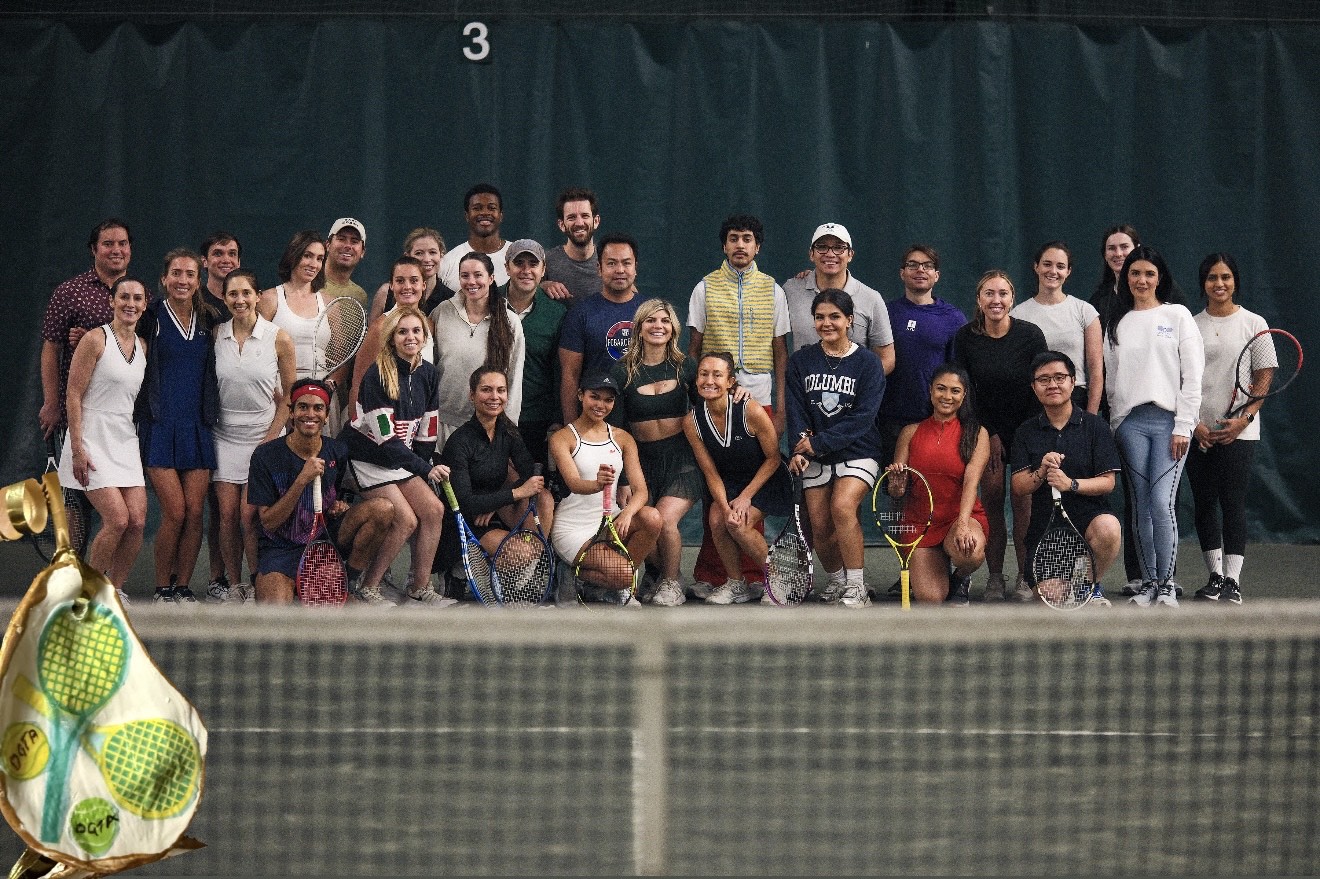In the heart of the Osu neighborhood in Accra, Ghana, the newly-finished Backyard Community Club presents a sleek, striated facade of buff rammed earth amongst shacks and apartments made of materials more familiar to local residents. In what was once an empty lot, the building hosts a training facility for promising tennis players, paid for and run by Amoako Boafo, the Ghanaian artist whose portraits grace museums worldwide. American-born architect Glenn DeRoche designed the compound, which houses changing rooms, an open-air kitchen, and a 230-square meter sustenance garden with medicinal plants and fruit trees.
Racquet spoke with DeRoche about the project and what it means for tennis in Accra.
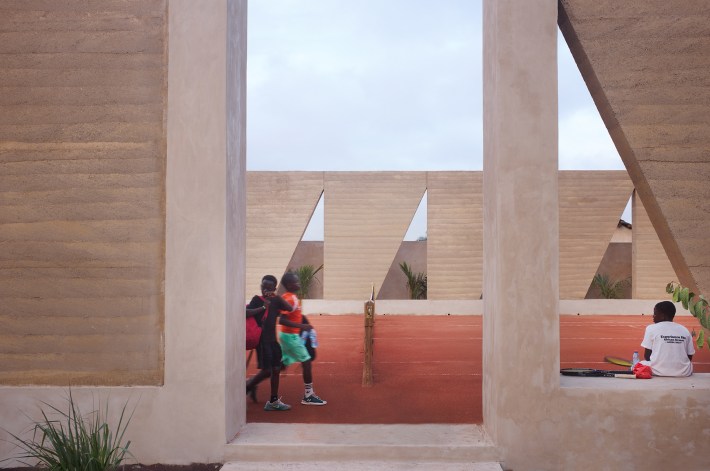
Racquet: You play tennis. Did that figure into why you wanted to do this project?
DeRoche: I played as a kid for a few years, and then stopped playing; it's a very expensive sport to get involved in, and we didn't have the financial capacity to be able to keep up with that. So the love was there, but not the finances. So I parked it, pursued my career in architecture, and then picked it back up in London. And since then, I’ve just never put the racquet back down. When I came to Accra, I realized how few public spaces there are for tennis. There are a few established tennis facilities, but they're all paid facilities. So if you don't have money, you don't have access. So when [Amoako Boafo] said he wanted to build a piece of tennis infrastructure in the heart of the Osu neighborhood, I couldn't say no to the commission.
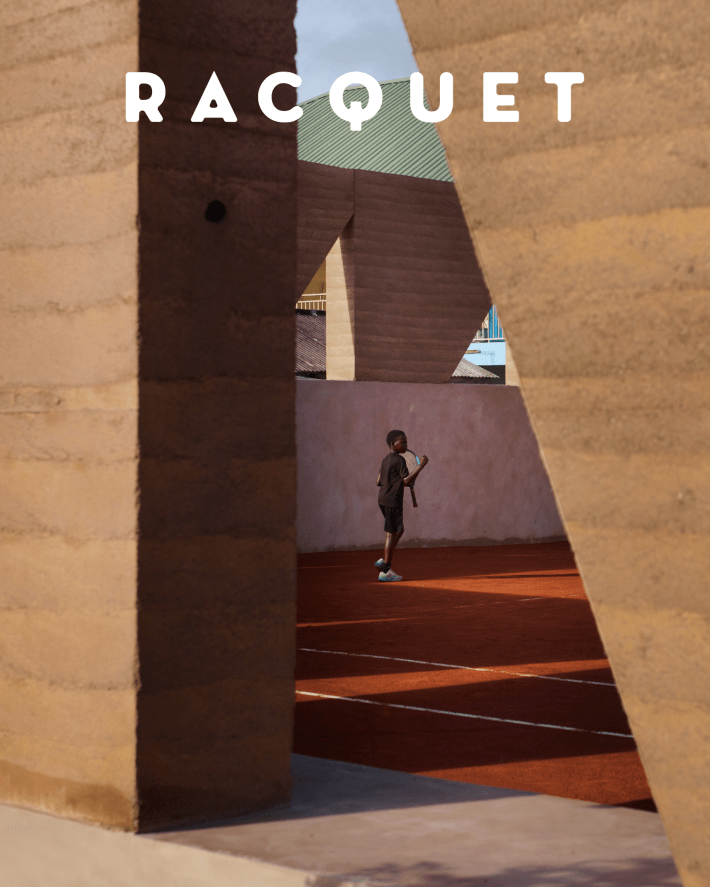
Racquet: It’s a beautiful space; how does the community use it?
DeRoche: The program currently sponsors nine West African tennis champions, all under the age of 18. [Boafo] built this facility to continue training them, so that they don't have to leave Ghana and go to Northern Africa, Algeria, Morocco, Tunisia, for tennis training. He wanted them to have the training they need to make it as professional tennis players here at home in Ghana.

Racquet: You’ve pioneered precast, modular rammed-earth panels, and used them to great effect with this project. Did you have to talk the client into it?
DeRoche: I presented it to the client and said, “Look, I want to build this tennis court for you, but I don't want to resort to a chain link fence around it. I mean, chain link fence is an imported material. Why don't we use something that's rooted culturally in the context of where we're building? And let's build with rammed earth. I've engineered and done all this research, and have all this proof of concept on paper. Would you be willing to take a risk on me and allow me to execute it for your project?” And he was all for the experiment.
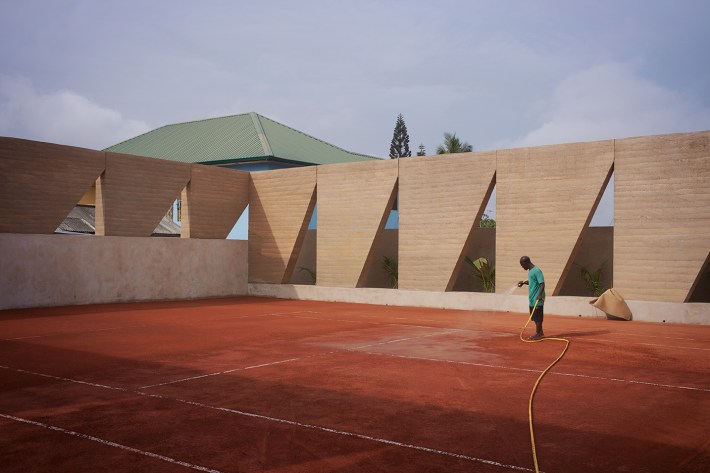
Racquet: those triangular cutouts are absolutely iconic. But are they problematic where lost balls are concerned?
DeRoche: It took a really large team of people to make this project happen. I want to celebrate and thank them, because we not only had material scientists working with us on how to do this, we had master carpenters, we had rammed-earth technicians and advisors, and we also had physicists.There’s a high solid wall at the ends of the court, because that's where most of the balls are going to bounce. As far as the sides: what the physicists showed us was that the balls that end up bouncing sideways will hit the walls or the triangles on an oblique path, and bounce back into the court. There was no need to put netting there behind to stop balls from going through the triangles.

In pre-casting it, we had a lot of liberty in generating form and shadow. If it were to be a flat wall, it really wouldn’t have any depth, and my work is really about the play of light and shadow and form. I'm obsessed with light and darkness, and how darkness allows us to appreciate light. So we designed this panel that was moving in two directions; it tapers in one plane and then it angles in another. That required really masterful carpenters to build the forms. And also, it's completely flat on the inside of the court, because you need to predict where the balls are going to bounce so that you can get it quickly as a ball boy. So that's why the inside is flat. On the outside, where we don't have to worry about the effectiveness of that, we wanted to play with light and shadow. It was a very fun, experimental, playful project that took us about three years to design and build, and we're really excited and proud of it.

Racquet: What’s it like to play there? Is it real terre battue [European-style red clay]?
DeRoche: One word: amazing. This is the first court constructed with this material. I can’t say that definitively, who knows what might exist in private homes, but it is certainly the first public facility to use it. The surface is real clay, made from crushed fired brick in varying granularities and carefully layered. It’s the only imported material on the project, yet it is essential: it allows the children to train continuously. Combined with the drainage system, the court dries much faster than the typical laterite surfaces found in Ghana. After rain, typically six to twelve hours later, depending on intensity, the children can play again. That continuity is critical to their training and to the life of the community that uses the facility.
